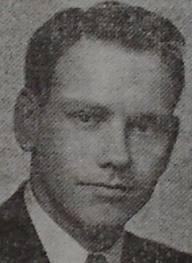This post is a continuation in a series on portfolio management and the Buffett Partnership Letters. Please refer to the initial post in this series for more details. During 1961, Buffett started to write semi-annual letters because his clients told him the annual letter was “a long time between drinks.” The second of the two 1961 letters written is a treasure trove of portfolio management information, so robust in material that the summary (organized by topic) will require multiple installments.
For those interested in Warren Buffett’s portfolio management style, I highly recommend the reading of this second letter in its entirety.
Hurdle Rate, Expected Return, Volatility
“There are bound to be years when we are surpassed by the Dow, but if over a long period we can average ten percentage points per year better than it, I will feel the results have been satisfactory…Specifically, if the market should be down 35% or 40% in a year…we should be down only 15% or 20%. If it is more or less unchanged during the year, we would hope to be up about ten percentage points. If it is up 20% or more, we would struggle to be up as much.”
Buffett had a goal of beating the Dow by 10% annually, on average, over a long period of time. In order to achieve this, he had to seek investments that met a return hurdle of 10% higher than the Dow – no easy feat since the Dow itself is a moving target. Additionally, the portfolio had to have an asymmetric volatility profile that captured the Dow’s upside volatility, but only a fraction of the Dow’s downside volatility. As the history books have shown, he was certainly successful in achieving his goal, but the means of how he did so remains a mystery. I believe that Buffett’s partnership letters, in particular the second 1961 letter, holds some clues.
Part of the answer lies in Buffett’s strategy of segmenting his portfolio and analyzing the return potential and volatility contribution of each portion.
“Our avenues of investment break down into three categories. These categories have different behavior characteristics, and the way our money is divided among them will have an important effect on our results, relative to the Dow in any given year.”
“The generals tend to behave market-wise very much in sympathy with the Dow. Just because something is cheap does not mean it is not going to go down. During abrupt downward movements in the market, this segment may very well go down percentage-wise just as much as the Dow. Over a period of years, I believe the generals will outperform the Dow, and during sharply advancing years like 1961, this is the section of our portfolio that turns in the best results. It is, of course, also the most vulnerable in a declining market.”
“[The work-outs] will produce reasonably stable earnings from year to year, to a large extent irrespective of the course of the Dow. Obviously, if we operate throughout a year with a large portion of our portfolio in work-outs, we will look extremely good if it turns out to be a declining year for the Dow or quite bad if it is a strongly advancing year.”
“The final category is “control” situations…Such operations should definitely be measured on the basis of several years…the stock may be stagnant market-wise for a long period while we are acquiring. These situations, too, have relatively little in common with the behavior of the Dow.”
“…I am more conscious of the dangers presented at current market levels than the opportunities. Control situations, along with work-outs, provide a means of insulating a portion of our portfolio from these dangers.”
We have written in the past that Buffett thought consciously about the expected return of his portfolio in our post on the 1957 Letter - Part 2, specifically, that he “left nothing to hope or chance, and thought very strategically about position sizing, the annualized expected return of these positions, and the estimated hurdle rate required to outperform his benchmarks by a margin of 10% annually.”
The excerpts from the 1961 letter shown above, clearly demonstrate that he segregated his portfolio into three segments and assigned expected return figures to each. The percentage weighting of these segments then impacted the overall expected return of his portfolio.
Going one step farther, Buffett also monitored the expected volatility– yes, the forward looking volatility – of each of these segments by anticipating how each segment would behaved in different market scenarios relative to his benchmark (the Dow). For example, the “generals” moved in tandem with the Dow, whereas Buffett believed that the “work-outs” had a relatively uncorrelated volatility profile “to a large extent irrespective of the course of the Dow.”
I have written in a previous post on the 1958 Letter - Part 1 that Buffett “never ignored volatility because he recognized the impact of this phenomenon on his performance return stream.” His words above lend confirmation.
Today, Buffett preaches that permanent impairment of capital is what he’s most worried about. Perhaps that’s true for the billionaire Buffett with a permanent capital base and established trackrecord. However, back in the day, he was much more focused on avoiding impairment of capital of any kind – even that temporary type incurred via price movement (i.e., volatility). After all (roughly paraphrasing Buffett’s words, not mine, see quotes above), just because something is cheap, doesn’t mean it can’t go down more.


